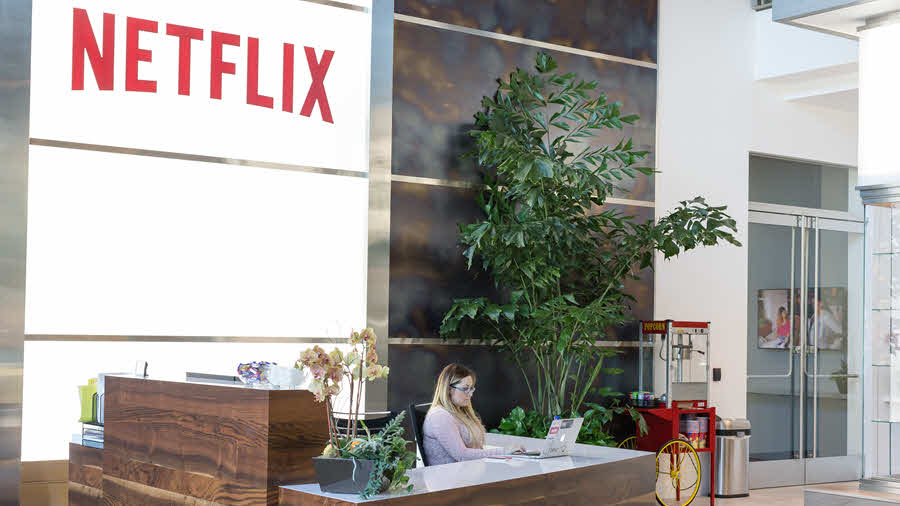Netflix Stock Jumps as Higher Rates Announced

Netflix announced higher prices for its streaming service and its stock price promptly jumped in mid-day trading Thursday (Oct. 5).
Netflix’s prices are rising to $13.99 from $11.99 a month for its premium tier, its standard plan rises to $10.99 from $9.99. Its basic plan stays at $7.99. The new price structure goes into effect in November.
After the news came out, Netflix stock rose to $191.83 a share, up more than 4%.
The company increased prices last year. That price increase had Wall Street worried whether the company would be able to continue its rapid subscriber growth.
Though it may have caused some churn at the time, it was hard to say how much of that was actually due to the price increase or the amount of conversation in the media around the price increase, which brought an undue amount of user attention to it,” said analyst Mark Mahaney of RBC Capital Markets. “Plus, it’s likely that a large number of users who churned off have since returned, as we’ve seen a very strong 1H17 in terms of domestic sub adds.”
Related: SVOD Viewing Still Surging
Mahaney thinks Netflix will benefit from the new price increases.
“We believe that Netflix’s pricing power has increased materially over the past few years as their content slate and technology has improved. Therefore, we believe that this price increase will likely be a revenue growth catalyst for the company. Our detailed survey work over the years has indicated the content, not price, is the leading churn/churn-back factor amongst Netflix subs,” the analyst said.
Broadcasting & Cable Newsletter
The smarter way to stay on top of broadcasting and cable industry. Sign up below
Netflix has been growing its revenue but it borrow money to spend the $6 billion it planned to spend on content this year. The company’s chief content officer, Ted Sarandos, said that its spending will rise to $7 million at an industry conference this week.
Mahaney estimates that the price increase could generate $650 million in additional domestic revenue in 2018 and $274 million in profits.
Marci Ryvicker analyst at Wells Fargo, said the timing of the price increase seems to make sense because the company continues to add subs despite the launch of streaming bundles from Hulu, YouTube, DirecTV and others.
But she says Netflix’ subscriber growth could slow by 7% year over year in the fourth quarter because of the price increase. “Perhaps the decline ends up being a little bigger than this; but we think the price hike is both warranted and good for the long term, Ryvicker said.
Ryvicker added that the Netflix price increase could be good for the Walt Disney Co., which is planning to launch direct-to-consumer streaming products using the Disney and ESPN brands.
Related: Disney Streaming Might Not Cost Netflix Subs, Analysts Say
“Recall our Disney branded streaming app model, which we priced at $9.99 two years from now," Ryvicker said. "We think Netflix’s price hike not only supports our model, but suggests there could be upside.”
But Mike Bloxham, senior VP of global media and entertainment at Magid, sees rising prices as a potential vulnerability for Nexflix.
“With prices for different packages now ranging from $96 - $168 per year, a Netflix subscription is starting to look a lot like a cable bill. However, for many people the appeal of the absence of advertising makes that worth it - even if they subscribe to other services as well and still retain cable, as many do,” he said.
The higher price also gives rivals more room to undercut Netflix. Bloxham sees an opening for Amazon to compete with Netflix on price.
For Amazon, video is only a small part of what it offers consumers as part of its Prime memberships.
“Obviously, the company wants to maximize revenues from its streaming service but that is only part of the picture. That makes Amazon a greater long term threat to Netflix than many people realize right now,” Bloxham said.
Jon has been business editor of Broadcasting+Cable since 2010. He focuses on revenue-generating activities, including advertising and distribution, as well as executive intrigue and merger and acquisition activity. Just about any story is fair game, if a dollar sign can make its way into the article. Before B+C, Jon covered the industry for TVWeek, Cable World, Electronic Media, Advertising Age and The New York Post. A native New Yorker, Jon is hiding in plain sight in the suburbs of Chicago.










